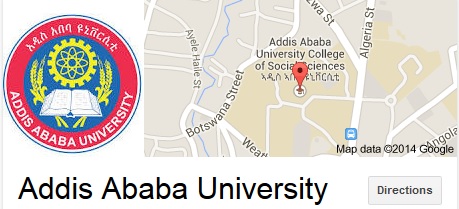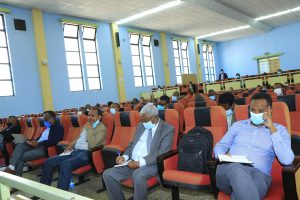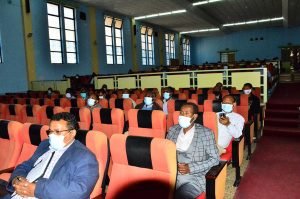The Need for University Autonomy in Ethiopia: the Case of AAU

Top, middle and lower level management of Addis Ababa University (AAU) discussed and added inputs on the issue of authorizing the University towards its mandates at College of Business and Economics main hall on the 18th of March 2021.
Professor Tassew Weldehanna, President of AAU, briefed the participants that the University is capable to ask the government to be autonomous on its mandates based on international standards, not basically for limited institutional self interest but also with a target to support the overall development of the country.
Prof Tassew highlighted what university autonomy means, the actual and accumulated potentials enabling AAU as autonomous, why the authorization is needed, the dimensions for autonomy, structure and features of the University after authorization, and hindering trends on the way forward.
If the university is authorized, “Efficiency and effectiveness of the university will be higher by producing well equipped graduates with theoretical, practical and soft skills so as to increase employability; achieves higher research, technology transfer, scholarly community engagement output and impact; drains the share of internal revenue and increases output or impact while continues to have increasing flexible government funding,” Prof Tassew noted.
Regarding AAU’s potential Prof Tassew said: it is the only university in the country which has about 4.5% of professors among its academic staff; has a number of huge colleges under it like Colleges of Heath Sciences, Computational Sciences, Business and Economics, AA Institute of Technology, and others.
AAU has great capacities on overall research performance tools like artificial intelligence based tools, application of software based anti-plagiarism policy as of March 2020, strong digital library (240, 000 electron books, 230,000 Thesis and Dissertation collections), online Ethiopian Journal service which has online publishing platform (more than 25 journals posted), over 50,000 open access journals, more than 10,000 subscribed journal titles, Prof Tassew added.
Interference from the government like in student admission, curriculum decision, low level of graduate competency, employer dissatisfaction (due to graduate competency), lack of autonomy for student placement, lack of freedom for students to choose their fields, worsening brain drain and higher staff turnover, lower salary, lack of academic freedom, accumulation of unproductive administrative staff, low and inflexible public funding for research, … according to Prof Tassew, are the main challenges of the University.
“AAU will develop its own standard procedure on procurement, financial management, administration and other activities that are suitable to establish a research university, work out to entrance regulation for admission of students at all levels, revise the existing procedure to ensure the current merit based appointment of top management, mobilize academic community to design internationally accredited program and curriculum and redesign university structure after securing authorization,” Prof Tassew said.
According to Prof Tassew, institutional autonomy to decide on internal governance and organizational structure, freedom to setup internal governance including government bodies, selection of external actors, freedom to determine internal academic structure, freedom to select institutional leadership, legal status of the university, institutional autonomy to decide about curriculum, academic programs and teaching methods, autonomy to decide academic standard, research and freedom to publish, decide about student related issues, staff employment matters, capacity to decide on staff salary, staff promotion and dismissals, opening branch campuses, finance administration, …are the dimensions of AAU towards authorization.
“An autonomous university characteristically means a higher education institution which exercises independent control over its day-to-day operations and curriculum. This has four main dimensions: academic, organisational, financial and staff self-rule,” (Muhammad Murtaza Noor: May 16, 2017).
By: Abraham Girmay
Photo: Andualem Aseffa

















 The main Admission Office It is located on the Main Campus (at Sidist Kilo) of Addis Ababa University.
The main Admission Office It is located on the Main Campus (at Sidist Kilo) of Addis Ababa University.









